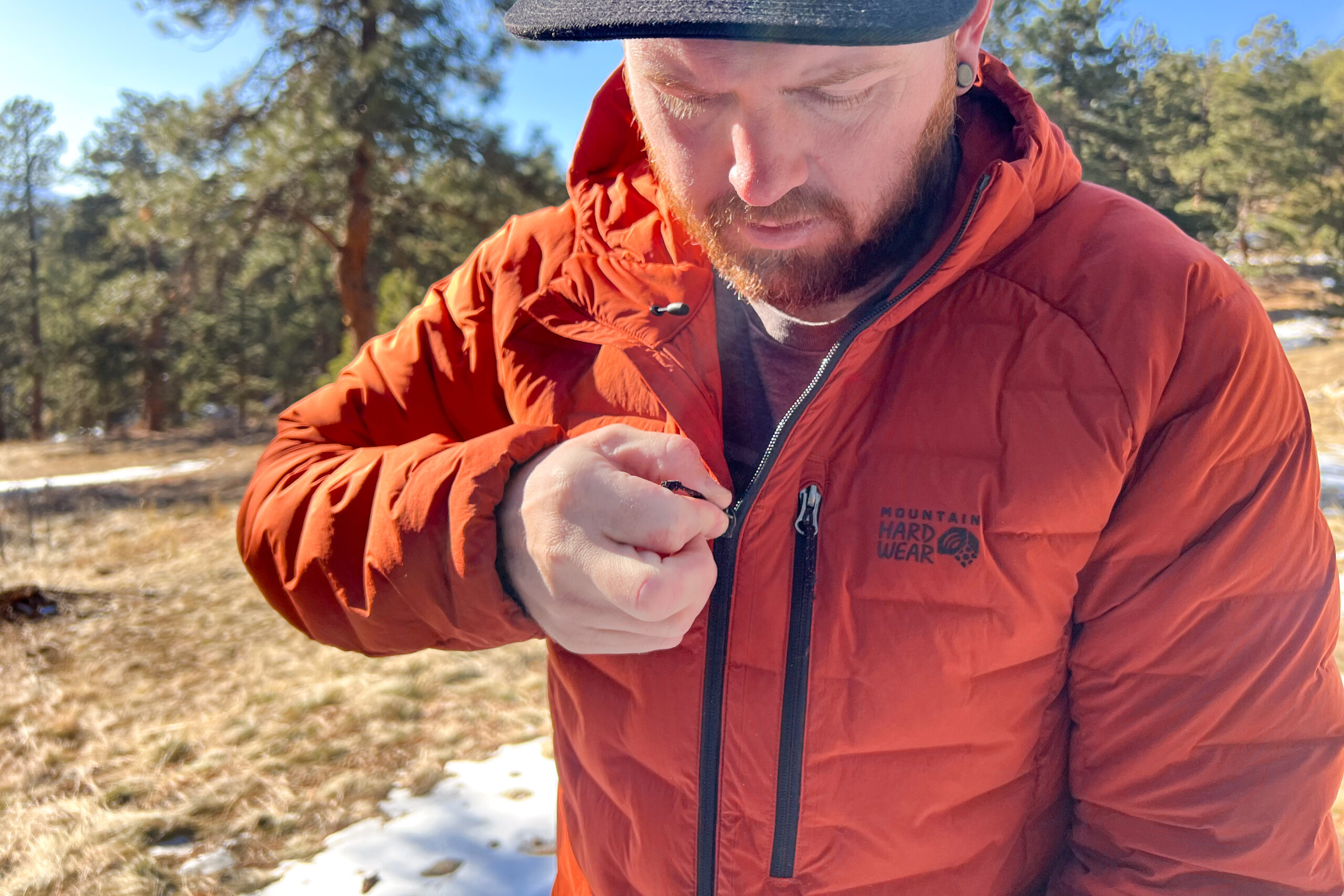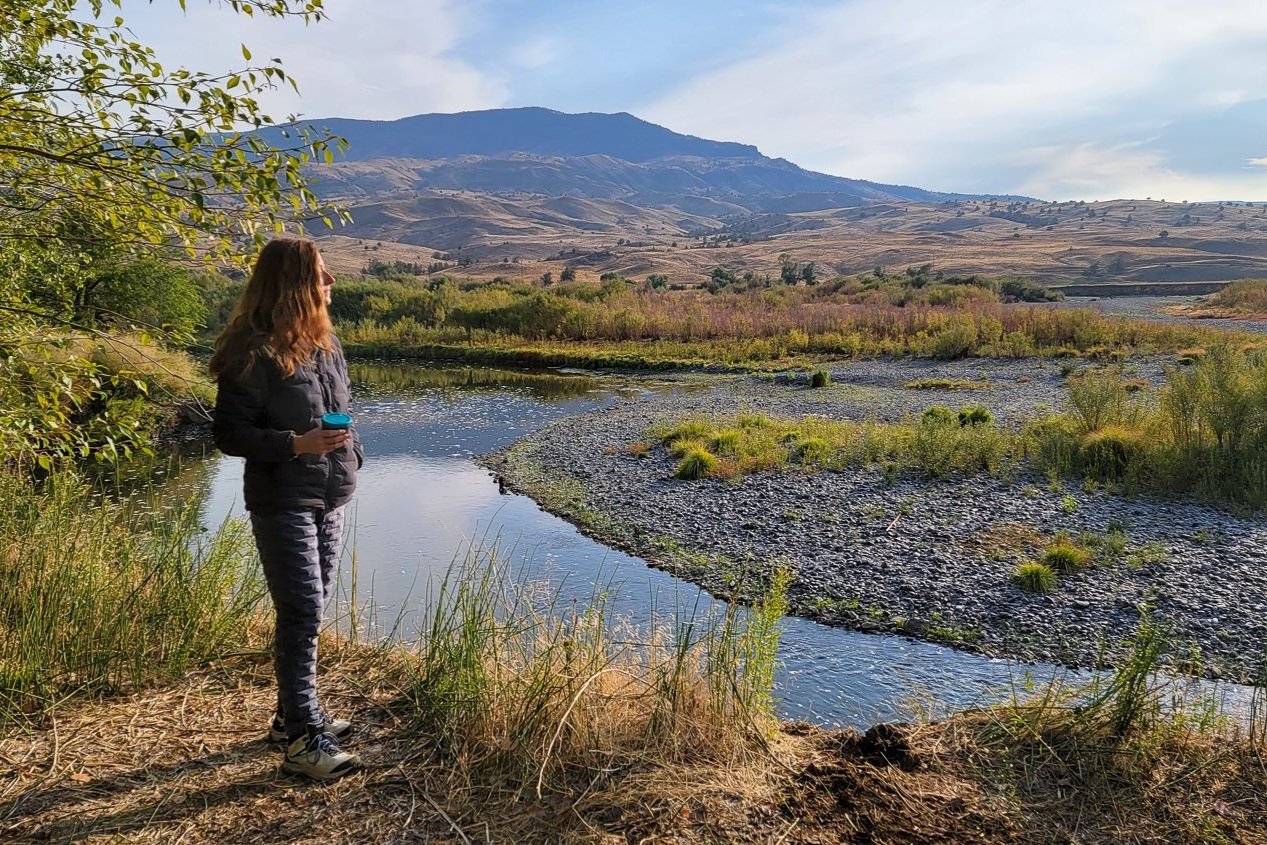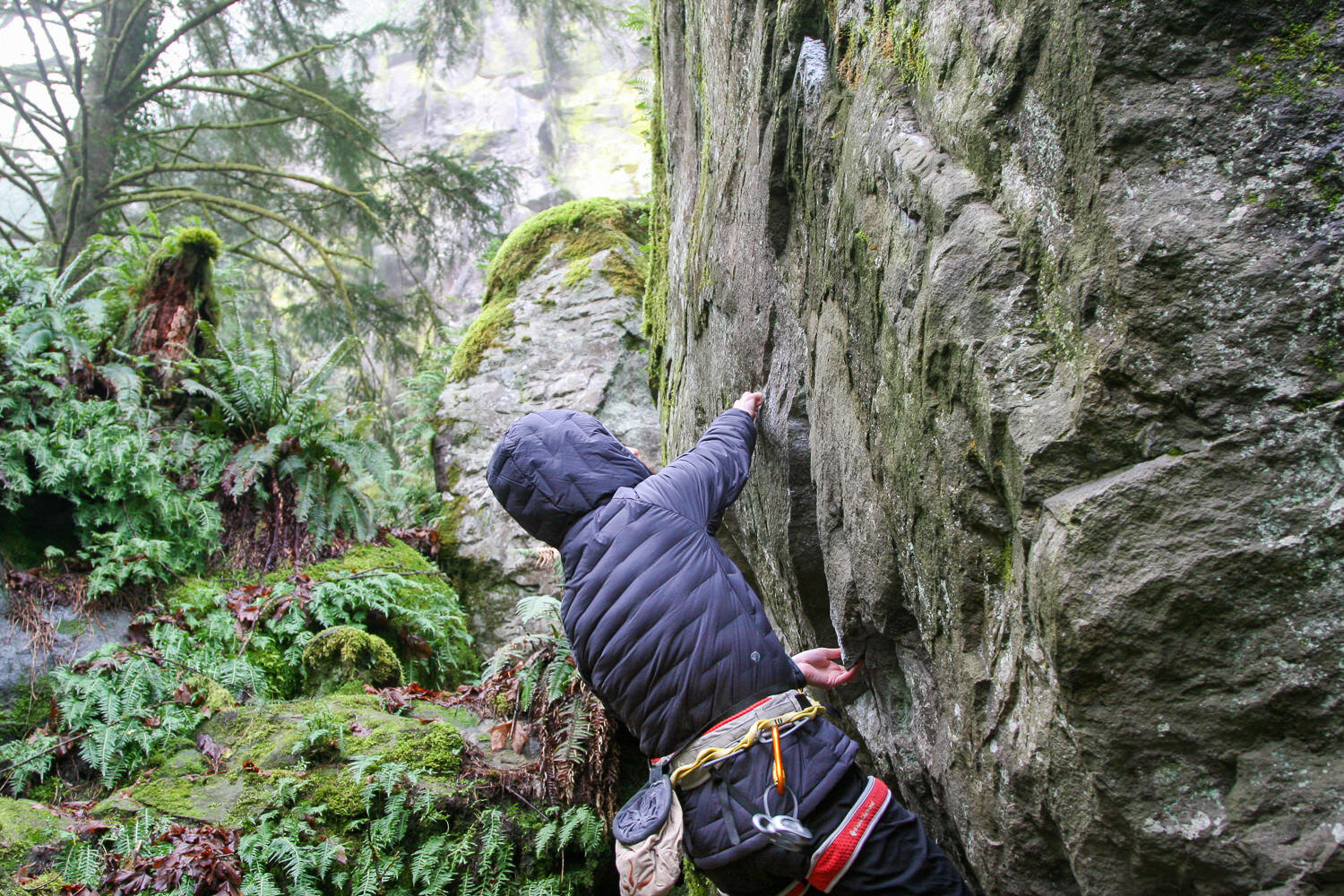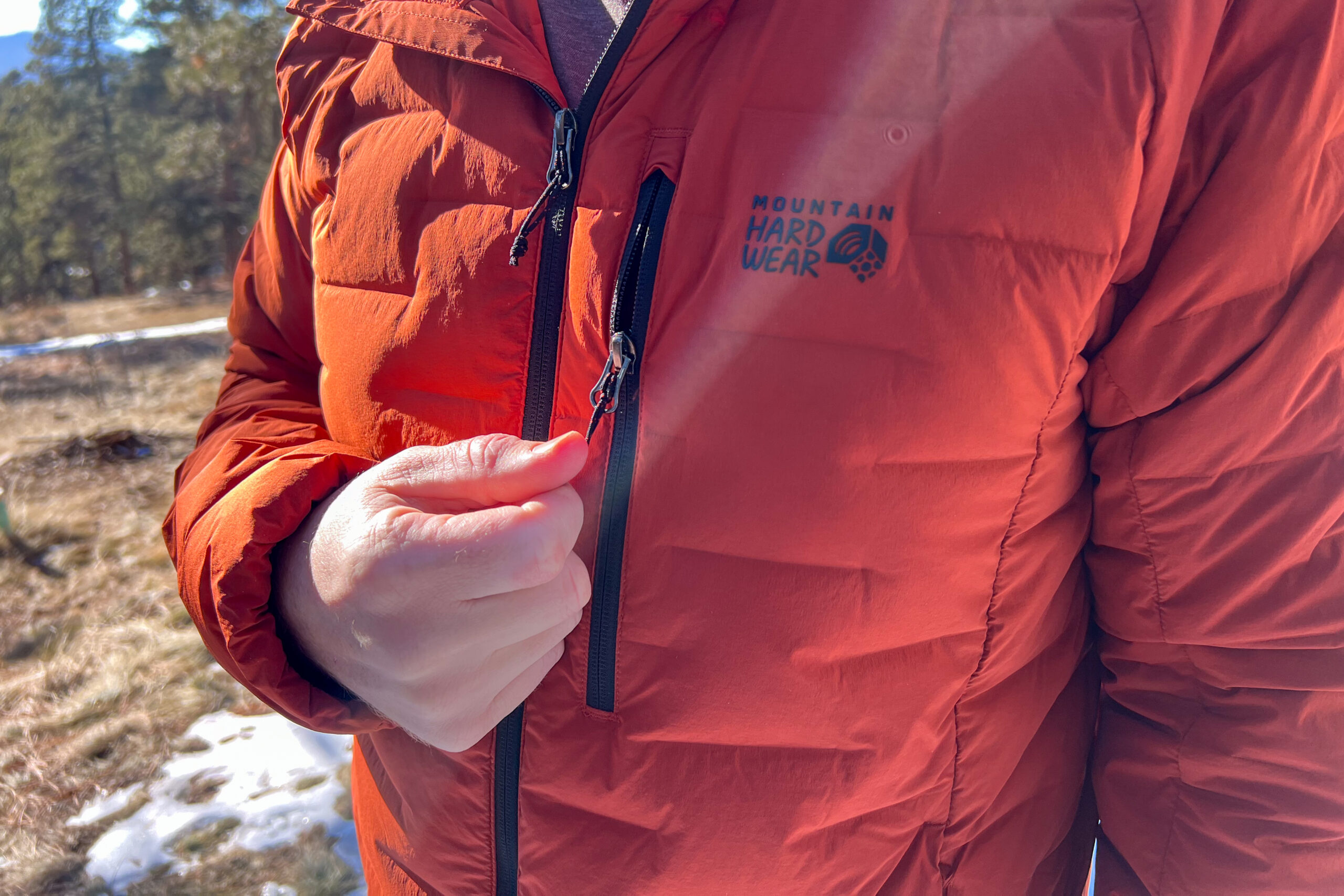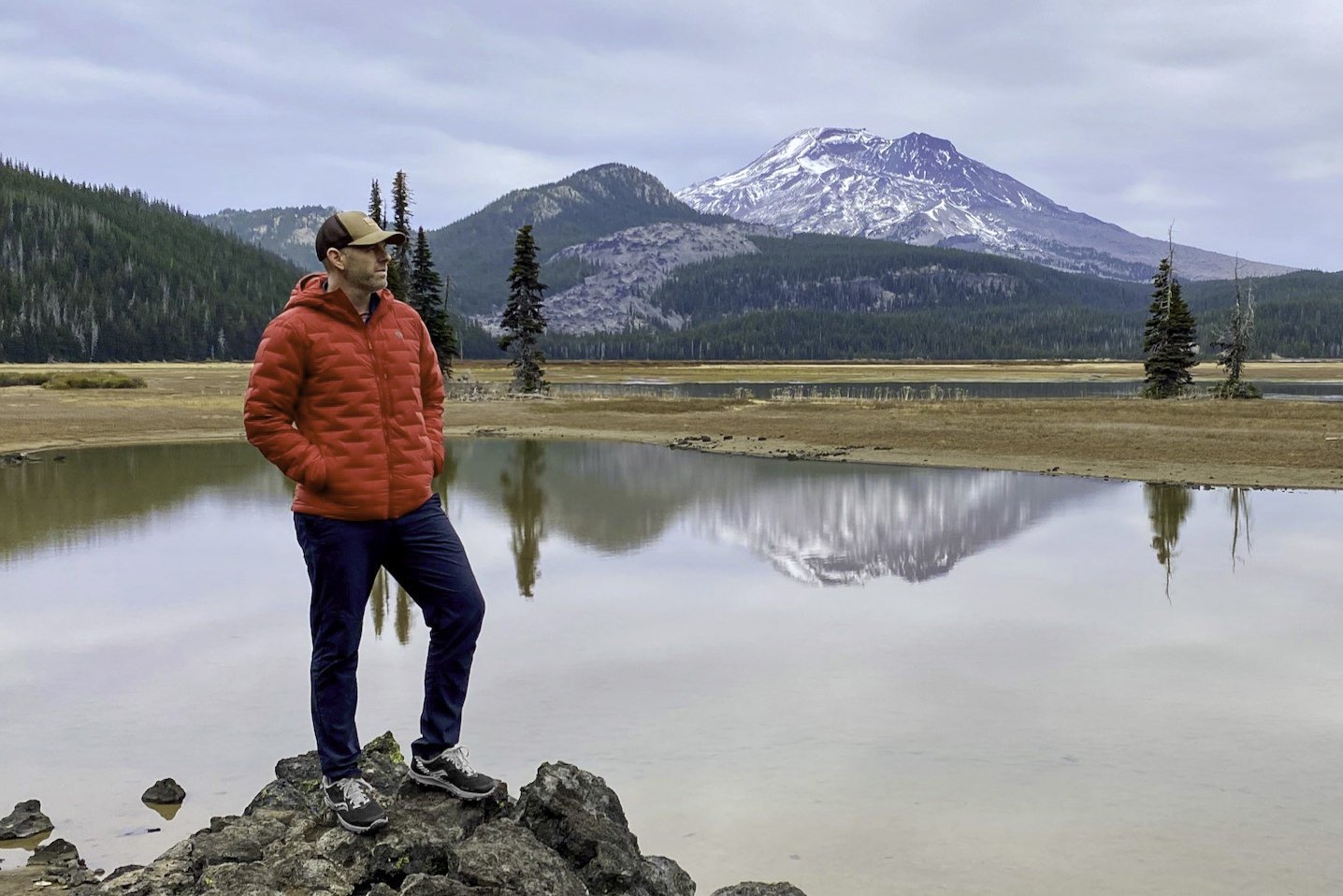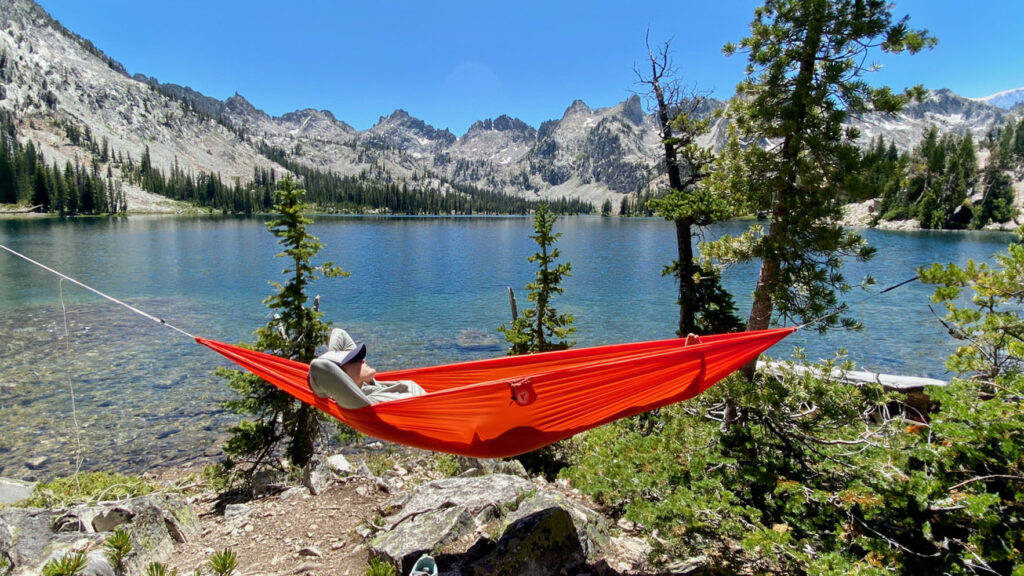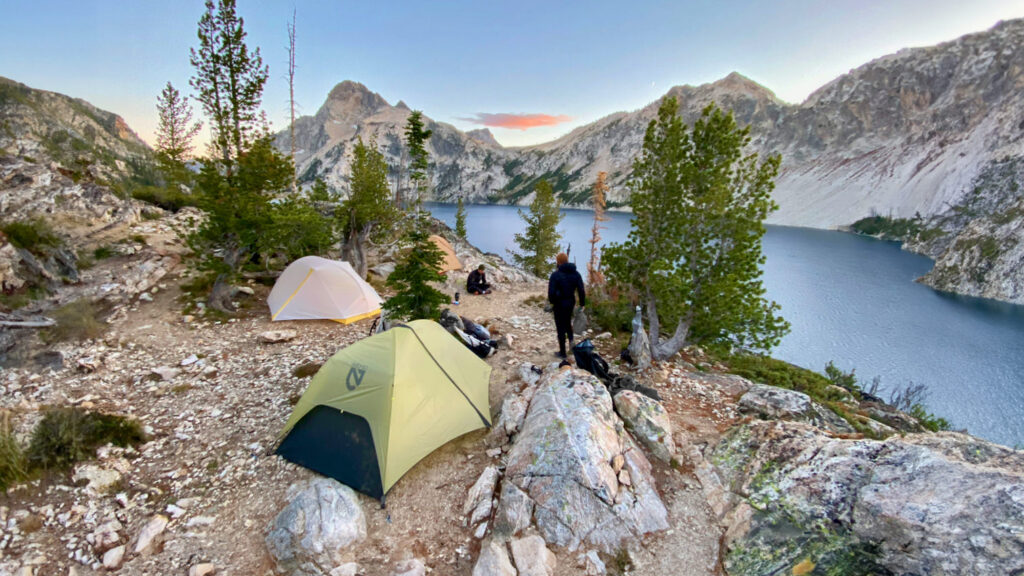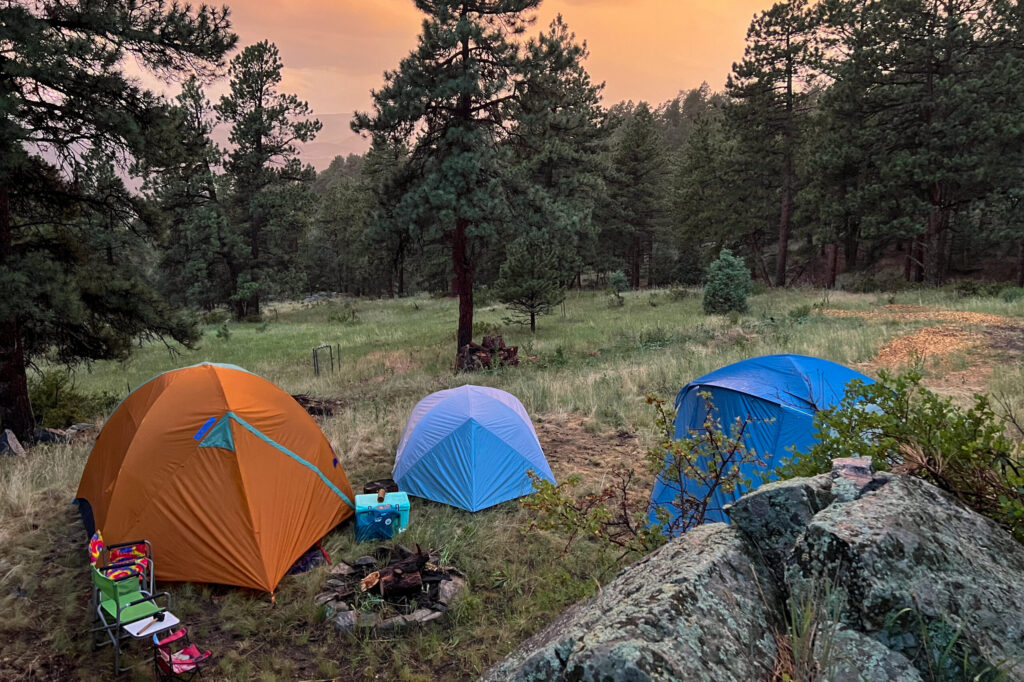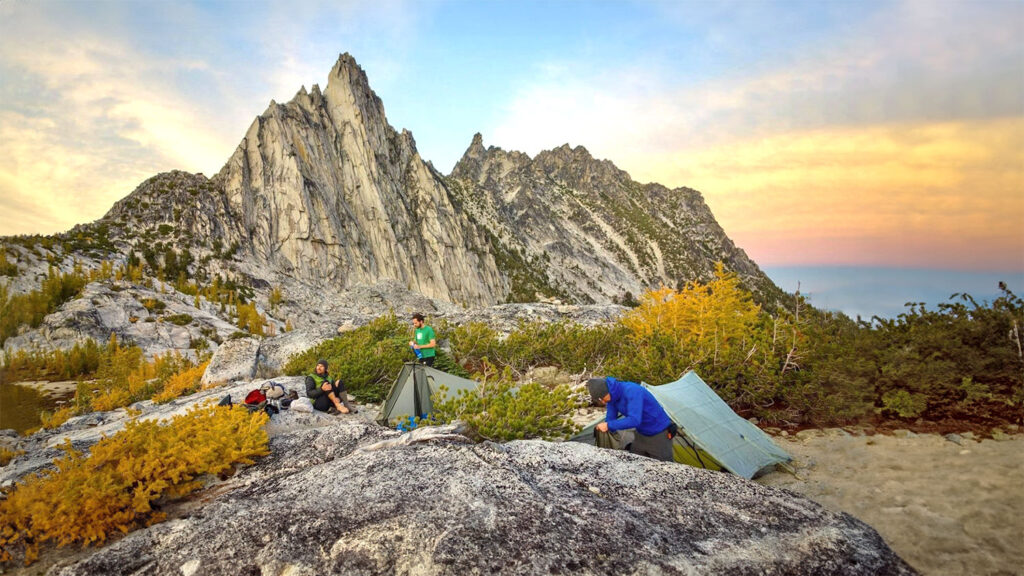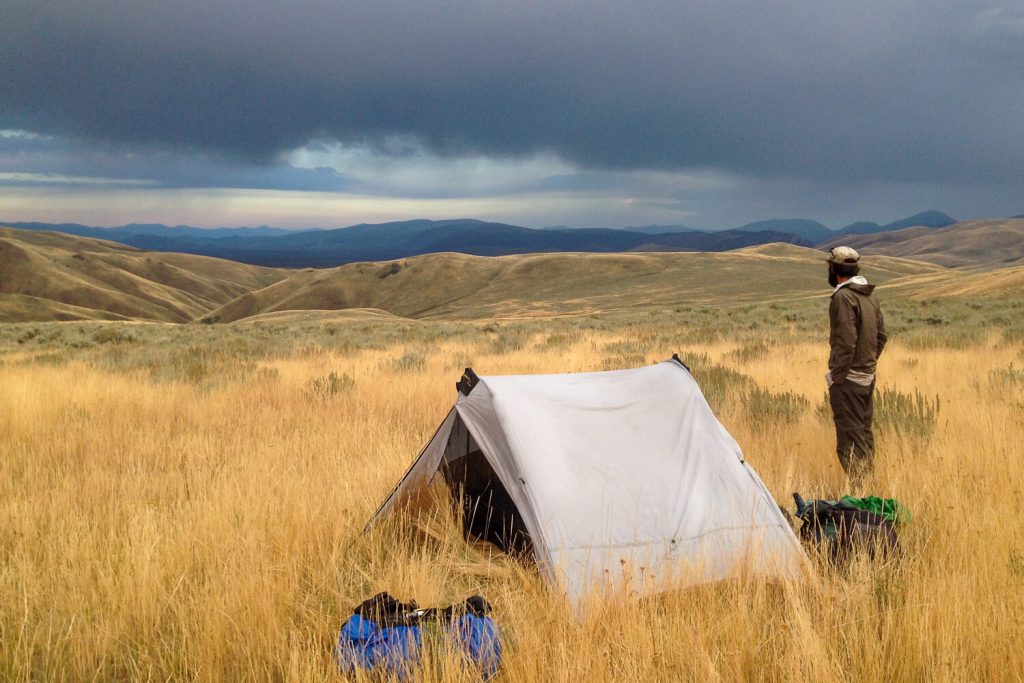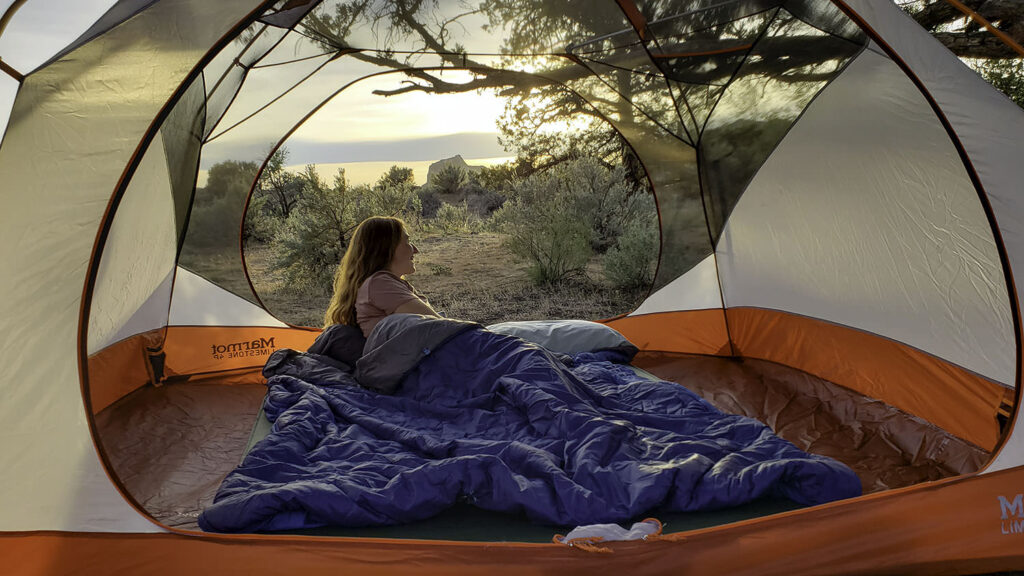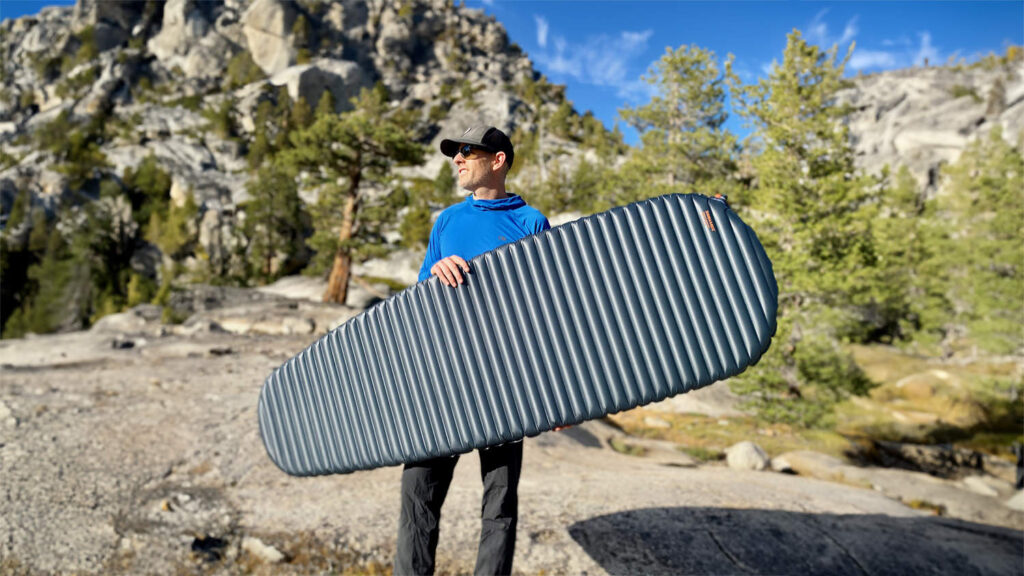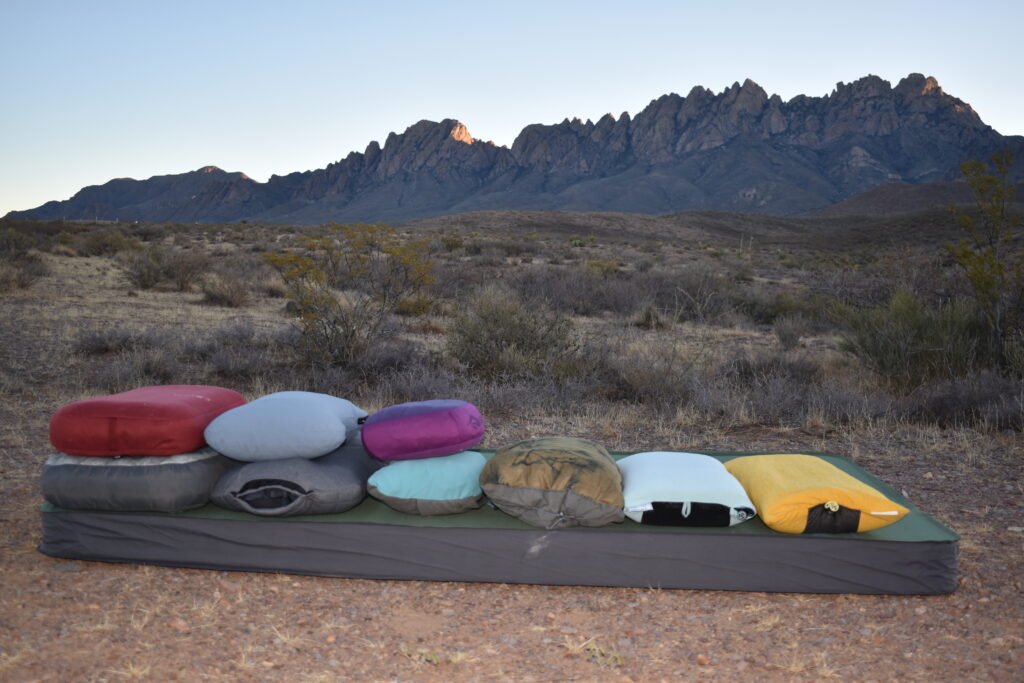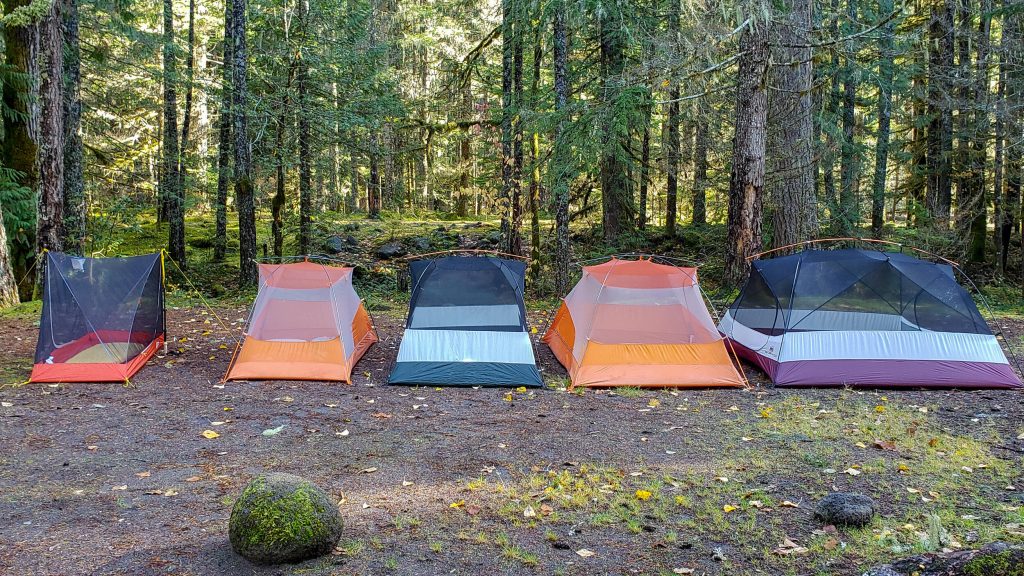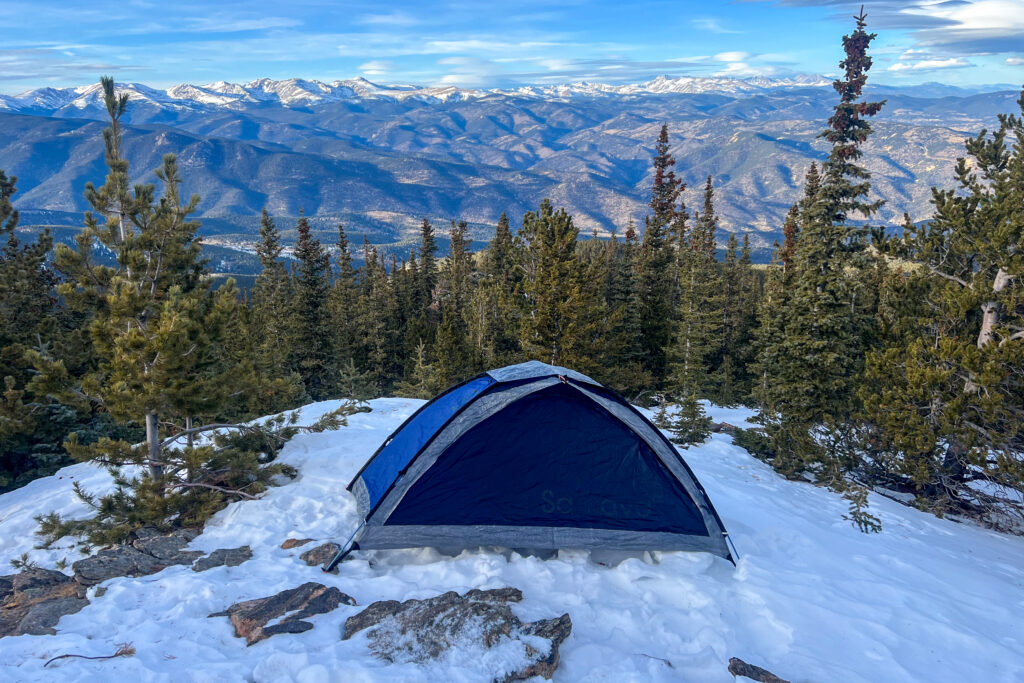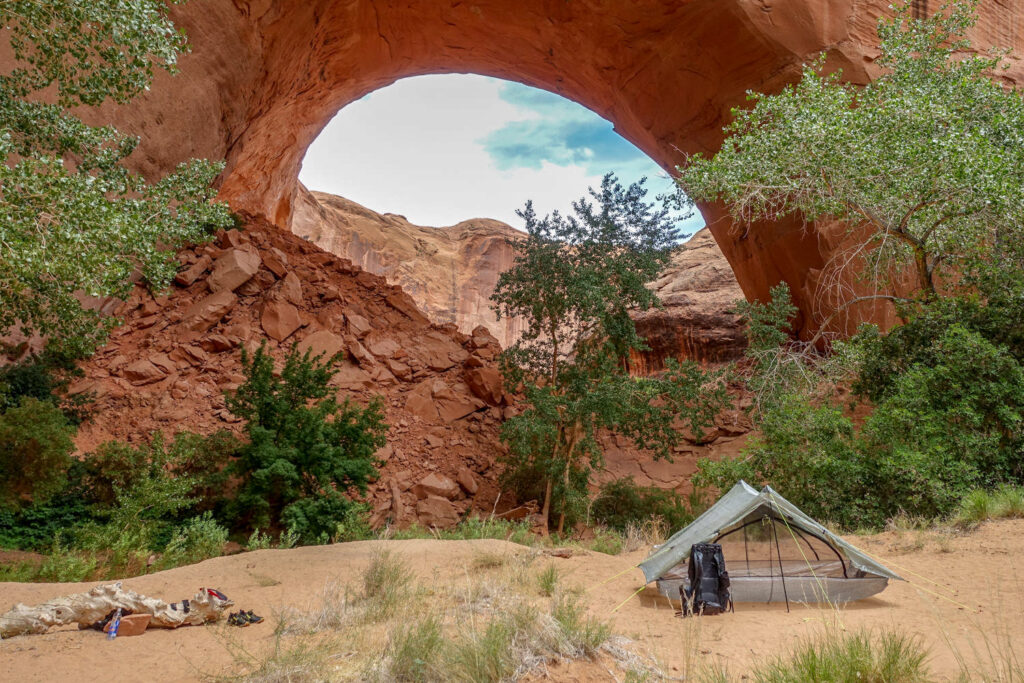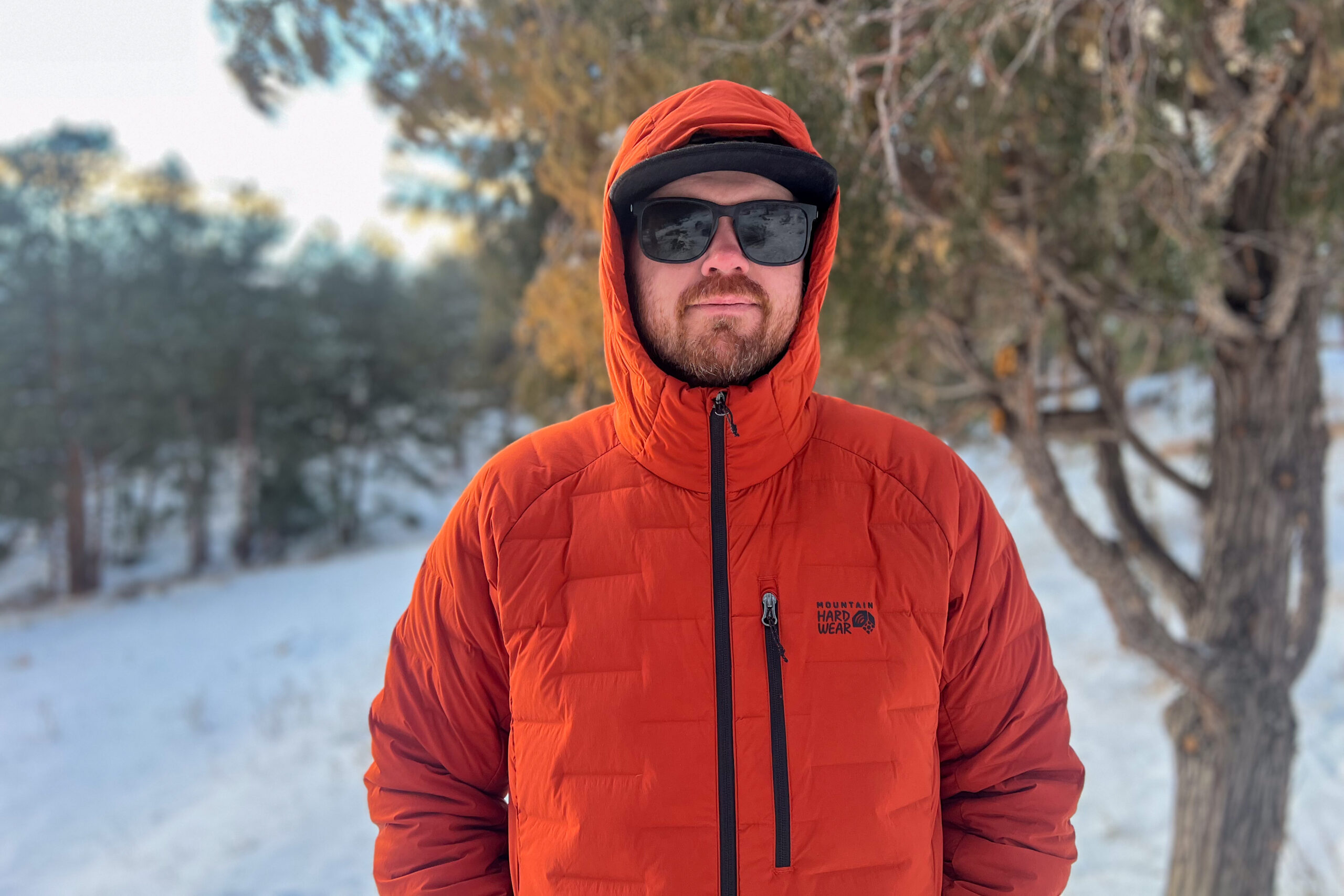
Bottom Line
The Mountain Hardwear Stretchdown Hoody (men’s / women’s) is all about balancing warmth and mobility, making it perfect for active adventures in cold weather. Its stretchy fabric and seamless baffles let you move freely, whether you’re climbing, hiking, or ski touring, while the 700-fill RDS-certified down keeps you cozy when the temps drop.
Unlike your typical down jacket, it feels more flexible and durable—but it does come with some trade-offs. It’s bulkier and heavier than many similar options, so it’s not the best pick if you’re tight on pack space or counting ounces.
While it handles light snow and wind well, it’s not built for sustained wet weather without a shell. If you value comfort, durability, and mobility over shaving every last ounce, this jacket is a solid choice. Check out how it stacks up in our guide to the best down jackets.
How We Tested
We tested the Mountain Hardwear Stretchdown Hoody over several months in Colorado wearing it on everything from alpine hikes in Rocky Mountain National Park to chilly fall climbs at Shelf Road and casual morning coffee runs in Boulder. With temps swinging from the 60s down to the teens, we got a real feel for how it handled warmth, mobility, and durability.
Quick Specs
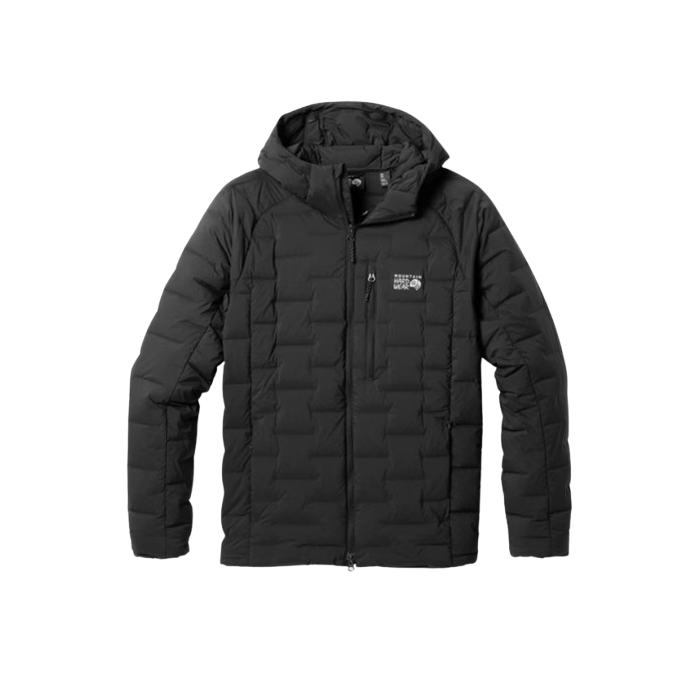
Mountain Hardwear Stretchdown Hoody
Best Down Jacket for Durability
CleverHiker Rating: 4.5/5.0
Price: $300
Weight: 1 lb. 2 oz. / 15.5 oz.(men’s / women’s)
Fill Power: 700
Fill Weight: 4.6 oz. / –
Pros
- Less expensive
- Warm
- Soft & stretchy material
- Comfortable
- Packs fairly small
- Layers easily
Cons
- A bit heavy for backpacking
- Bulky / less compressible than other jackets
- More delicate hardware
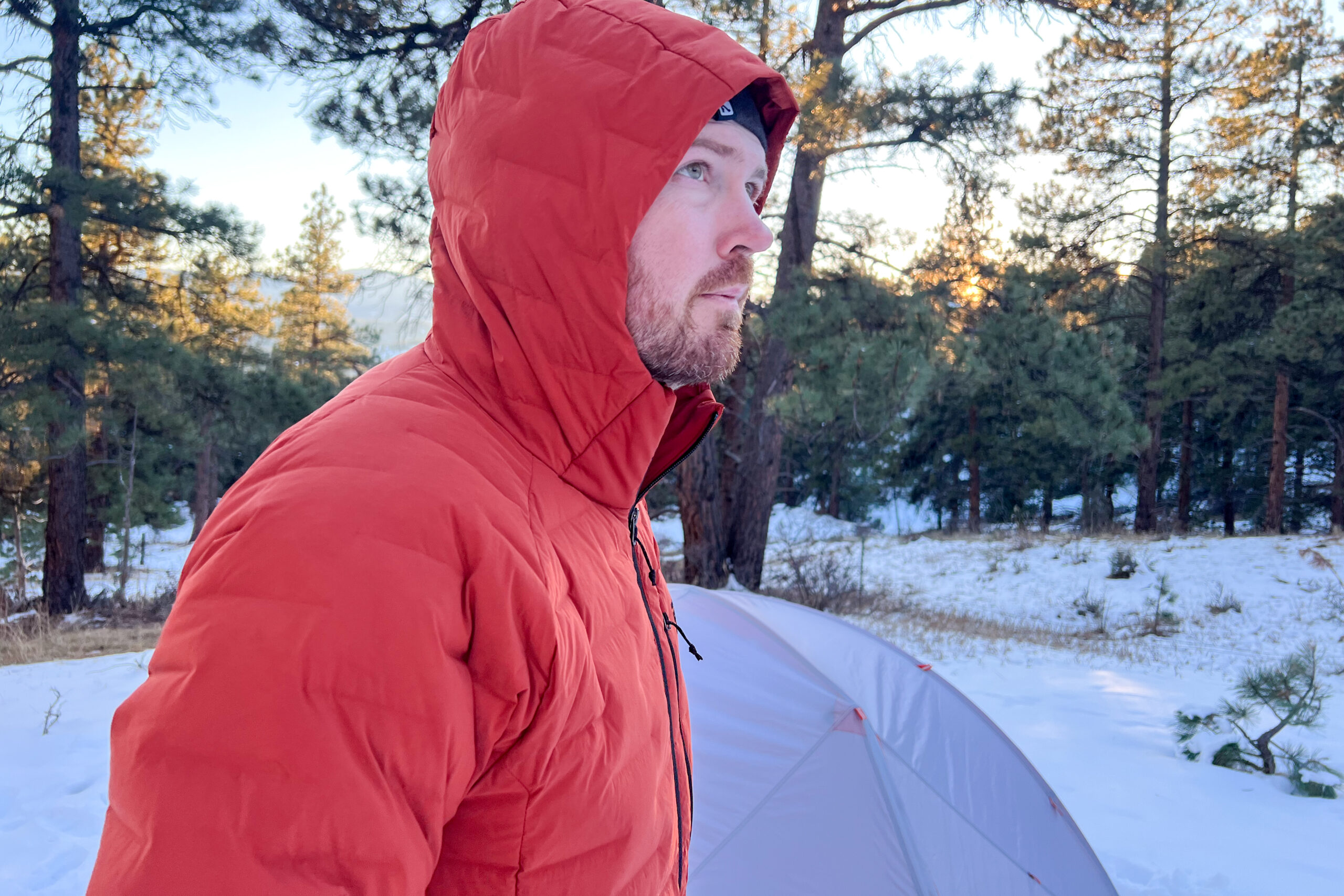
Comfort
The Mountain Hardwear Stretchdown Hoody offers a decent level of comfort, but it doesn’t fully deliver the plush feel we’ve experienced with other premium down jackets.
While the stretch-woven fabric improves mobility and prevents restriction during activities like climbing and hiking, it lacks the softness found in more traditional nylon-shell designs. During testing in the Colorado mountains and foothills, we found the material functional but not particularly cozy, especially when worn directly over a t-shirt.
The fit is versatile, providing enough room for layering without feeling overly bulky. Key features like the elastic-bound hood and adjustable hem add some comfort by sealing out drafts, and the stretch fabric prevents the jacket from riding up during dynamic movements. However, testers noted that the material’s texture felt slightly rougher than expected for casual, everyday wear.
While the Stretchdown Hoody performs well in active settings, its comfort falls short of being a standout feature, making it better suited for those prioritizing mobility and durability over a luxurious feel.
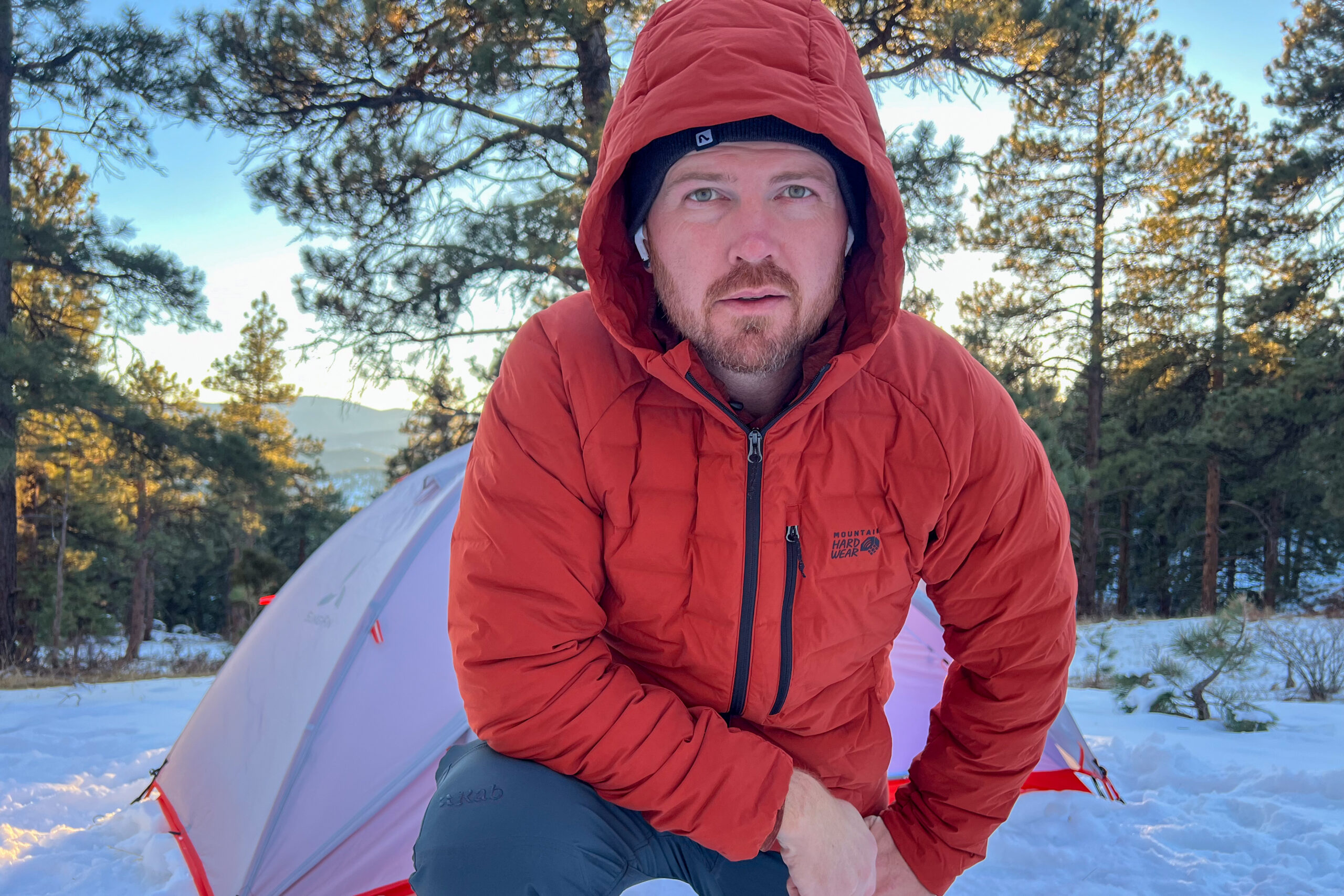
Warmth
This jacket provides reliable warmth for active use in cool to moderately cold conditions (add lower limit?), but it’s not designed for extreme cold or extended stationary activities.
With 700-fill-power RDS-certified down, this jacket balances insulation and mobility. During testing in the Colorado mountains, we stayed comfortable in this jacket down to freezing temps—so long as we were on the move. But once we stopped moving in those same temps, we definitely started feeling the chill and needed to throw on an extra layer.
The jacket’s thick, stretch-woven fabric and large baffles trap heat effectively, making it a solid choice for shoulder-season adventures. The insulated hood adds extra warmth and fits snugly over a hat or climbing helmet. However, the jacket’s relatively low fill rating compared to higher-fill-power options limits its insulating efficiency, especially in freezing or windy conditions.
Overall, the Stretchdown Hoody performs well as an active midlayer or lightweight outer layer for cool weather, but it falls short of being a go-to option for extreme cold. It’s ideal for those who prioritize mobility and durability over maximum warmth, making it a practical choice for hiking, climbing, and other high-heart-rate activities.

Weight & Packability
Mountain Hardwear advertises the down jacket weight 9.3 ounces., Surprisingly, the men’s large version we tested weighed in at 18 ounces—nearly double the claimed weight.
At 18 ounces, the Stretchdown is considerably heavier than ultralight competitors but also has, in some cases, double the fill weight.
In terms of packability, the Stretchdown falls short compared to other down jackets. Its bulk—roughly the size of a volleyball when compressed—makes it less suitable for minimalist backpacking or trips where space is at a premium. Unlike many competitors, it does not pack into its own pocket or include a dedicated stuff sack, further limiting its portability.
The added weight and bulk stem from the durable stretch-woven fabric, which prioritizes flexibility and ruggedness over lightweight efficiency. While this construction is excellent for mobility and durability during climbing or hiking, it compromises the jacket’s appeal for those focused on weight and packability. Ultimately, while the Stretchdown excels in versatility and ruggedness, it’s not an ideal choice for ultralight enthusiasts or those looking for compact, travel-friendly gear.
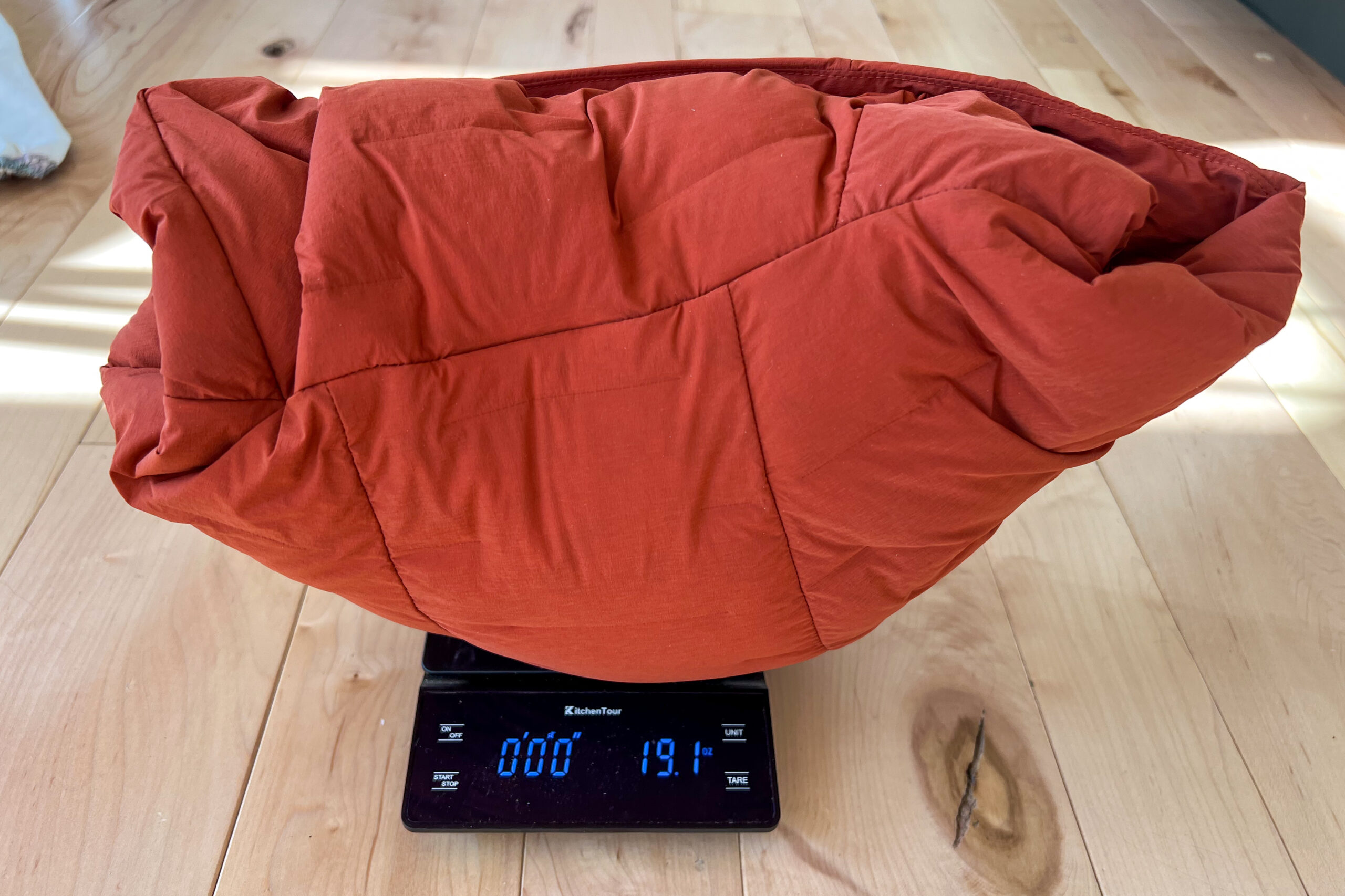
Weather Resistance
During testing in the Colorado foothills, we encountered light snow flurries and brief drizzles, and the DWR (durable water-repellent) coating effectively shed moisture, keeping the down insulation dry. On a chilly climb in Eldorado Canyon, the fabric also provided better wind protection than thinner down jackets, helping to maintain warmth on exposed belay ledges.
However, the jacket is not designed for sustained wet weather. Like most down-insulated jackets, prolonged exposure to rain or wet snow will eventually saturate the fabric, causing the down to clump and lose its insulating power.
Additionally, the lack of hydrophobic down further limits its ability to withstand heavy or extended precipitation. For harsher conditions, pairing the Stretchdown with a waterproof shell is essential to maintain its performance.
In windy scenarios, the Stretchdown’s thick fabric and cinchable hem do a good job of minimizing drafts, but the absence of wrist adjustments means some cold air can sneak in.
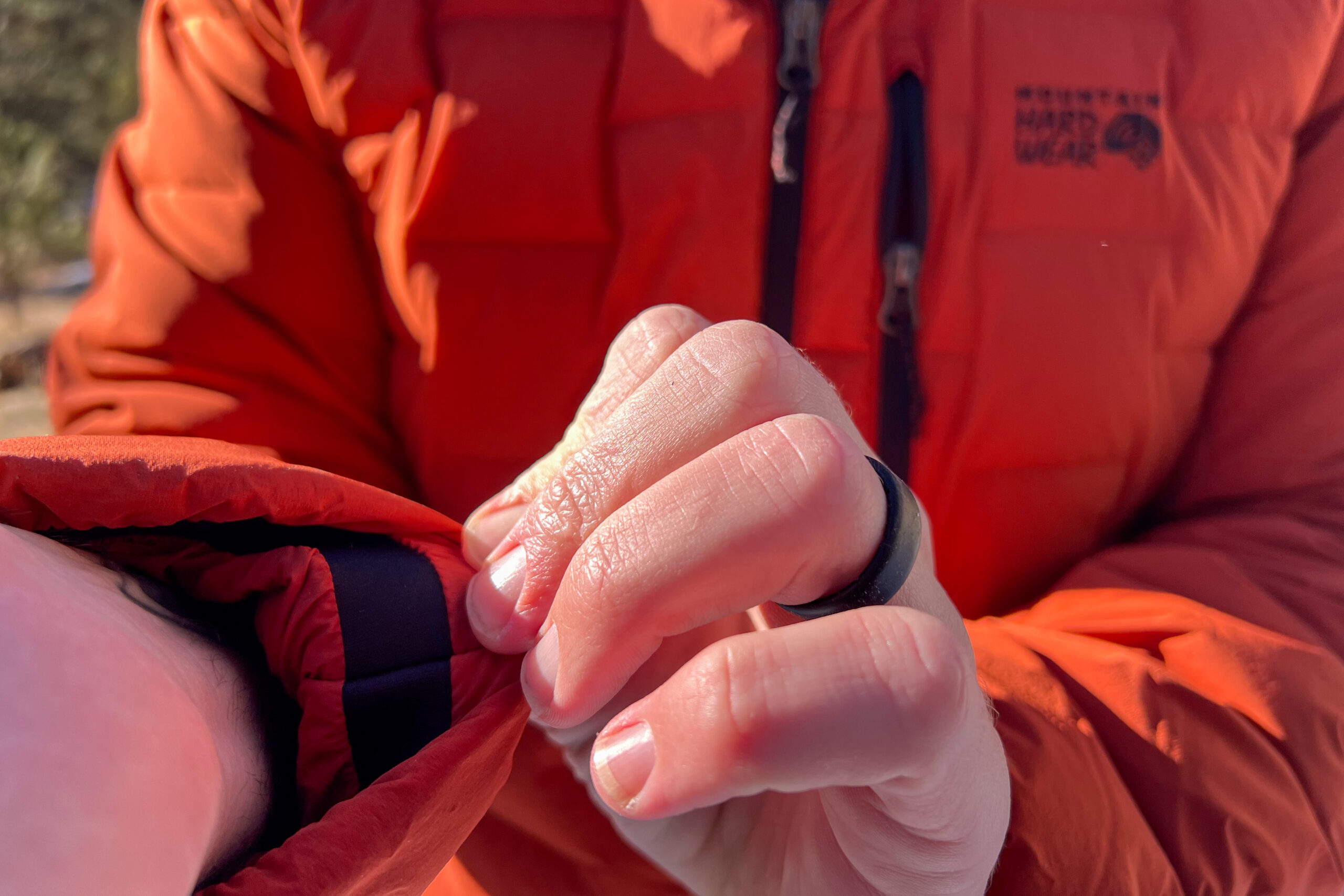
Breathability
The Mountain Hardwear Stretchdown Hoody offers moderate breathability, making it a good fit for activities that involve a mix of movement and rest.
The unique stretch-woven fabric is slightly more breathable than traditional down jacket shells, allowing for some airflow during light to moderate exertion. This makes it a practical choice for activities like hiking, climbing, or casual alpine outings, where maintaining warmth without overheating is important.
That said, the Stretchdown’s breathability has its limits. During high-output activities like uphill climbs or faster-paced hikes, we noticed it struggled to dissipate heat and moisture effectively.
The lack of ventilation features, such as pit zips or mesh-lined pockets, meant we had to rely on the front zipper to regulate temperature manually. While unzipping the jacket provided some relief, it’s not an ideal solution for maintaining consistent comfort during strenuous activity.
Compared to synthetic or hybrid jackets, which are typically better suited for intense efforts, the Stretchdown is less capable of handling prolonged high-energy use in milder conditions. However, its balance of warmth and breathability is adequate for cooler shoulder-season temperatures and moderate activity levels.
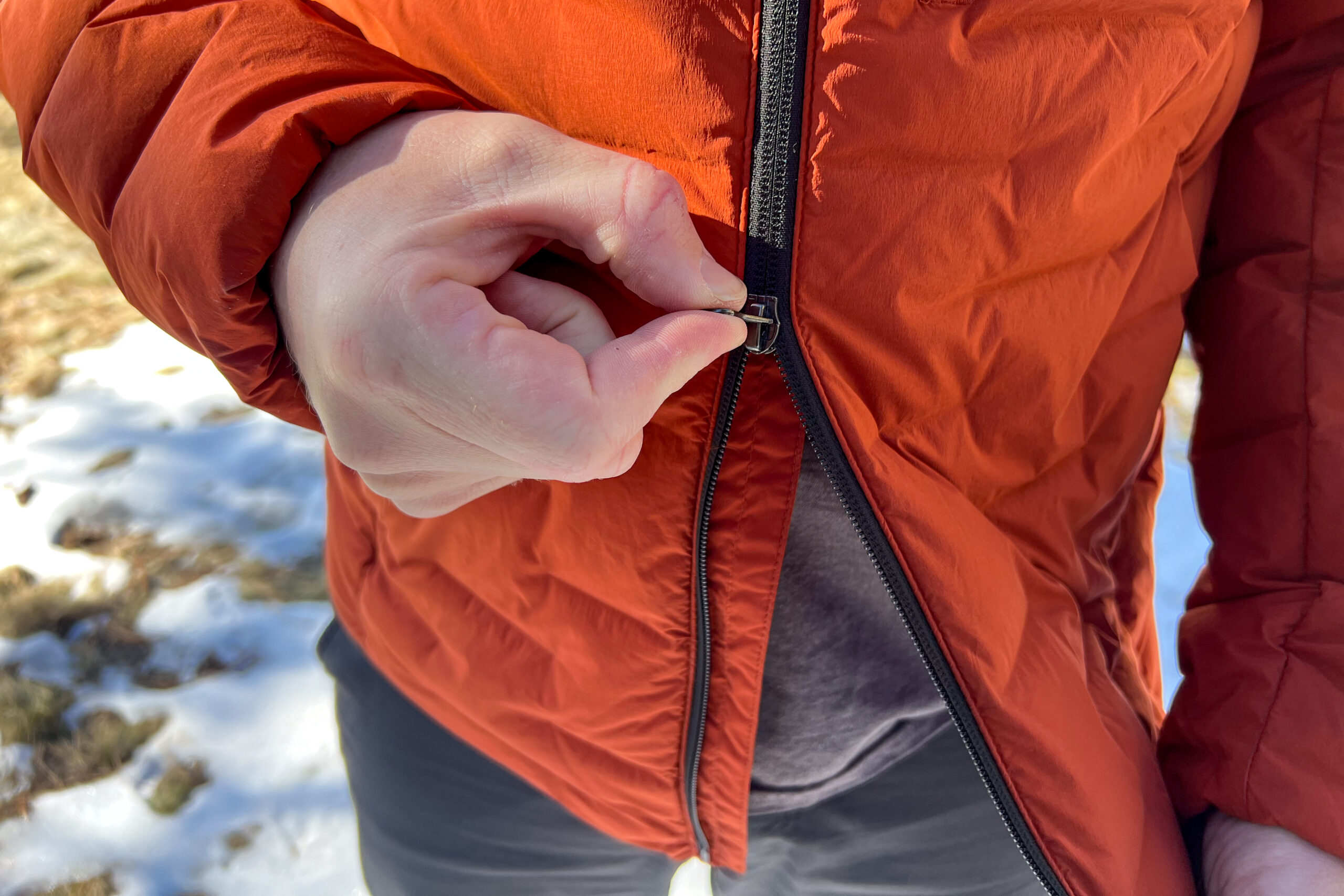
Should You Buy the Mountain Hardwear Stretchdown Hoody?
The Mountain Hardwear Stretchdown Hoody is a versatile jacket designed for those who prioritize mobility, durability, and performance in cool-weather activities.
Its unique stretch-woven fabric and 700-fill down insulation make it ideal for shoulder-season adventures, alpine hiking, and climbing, where freedom of movement and moderate warmth are essential. The rugged outer material is more durable than most lightweight down jackets, making it a dependable choice for bouldering or bushwhacking.
This jacket may not be the best choice for ultralight backpackers or those seeking a highly compressible option. At nearly double its listed weight in a men’s large and with limited packability, it’s bulkier than many alternatives. Additionally, its warmth isn’t sufficient for stationary use in freezing temperatures.
For those seeking a reliable, comfortable jacket that bridges the gap between technical and casual use, the Stretchdown Hoody is a worthy investment.
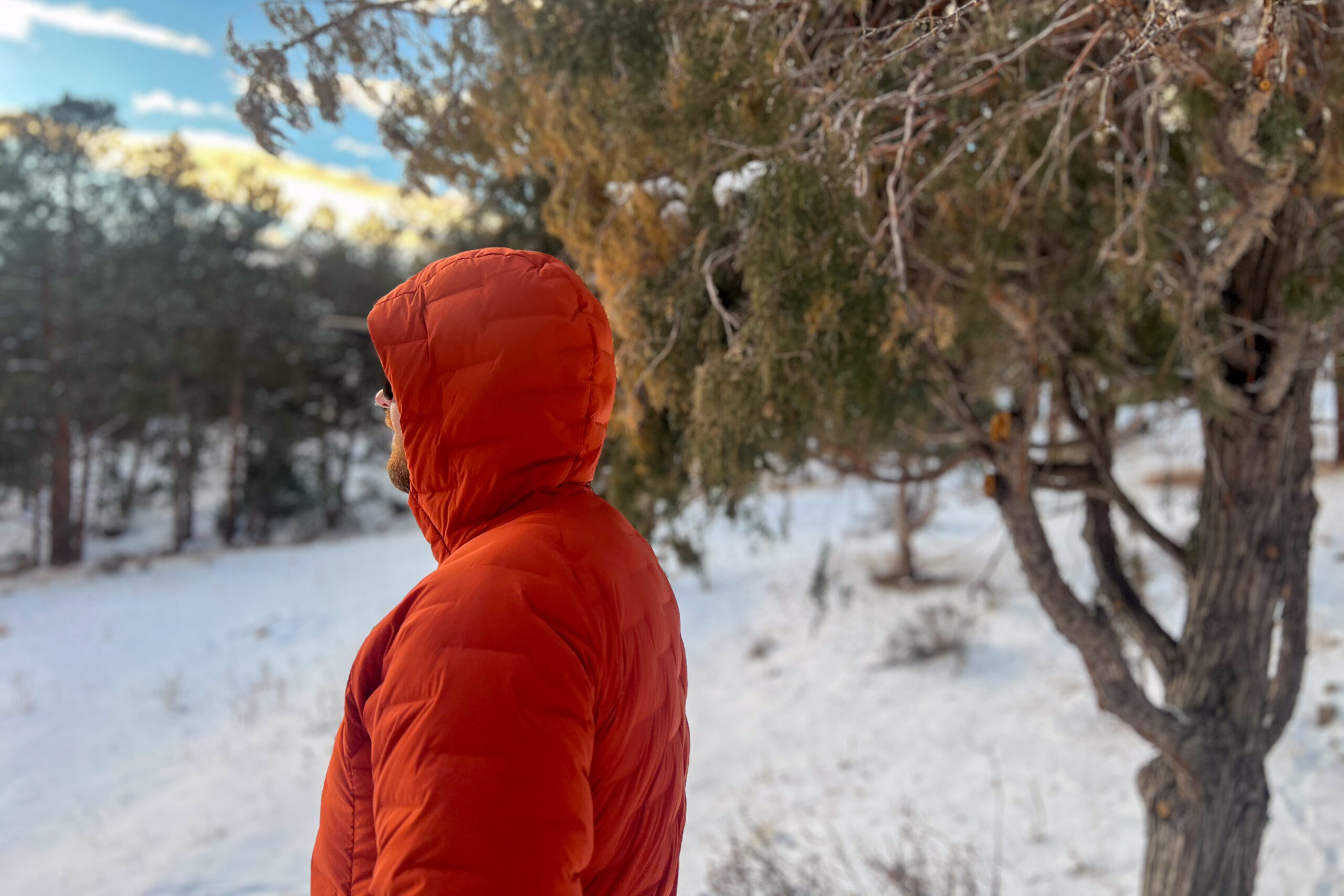
What Other Down Jackets Should You Consider?
If you’re exploring the best down jackets on the market, there are several alternatives to the Mountain Hardwear Stretchdown Hoody that cater to different needs and priorities. For more options, check out our guide to the best down jackets.
Patagonia Down Sweater Hoody Review: This classic jacket offers higher warmth-to-weight efficiency with its 800-fill down and a more traditional design. It’s a great choice for those seeking a lighter and more packable jacket for casual or technical use. It’s $30 more expensive but more than an ounce lighter.
Arc’teryx Cerium Hoody Review: For backcountry enthusiasts, the Cerium provides a premium, lightweight design with 850-fill down and synthetic insulation in moisture-prone areas. It’s perfect for those prioritizing warmth and performance in a minimalist package. It is also $100 more expensive than the Stretchdown Hoody.
REI Co-op 650 Down Hoodie Review: A budget-friendly alternative with great value, the 650 Down Hoodie offers solid warmth and durability for everyday use. It’s less technical but ideal for casual adventurers.
Rab Microlight Alpine Down Jacket Review: With its streamlined fit and weather-resistant features, the Microlight Alpine is perfect for alpine climbs and rugged conditions. It’s slightly heavier but excels in durability and technical applications.
